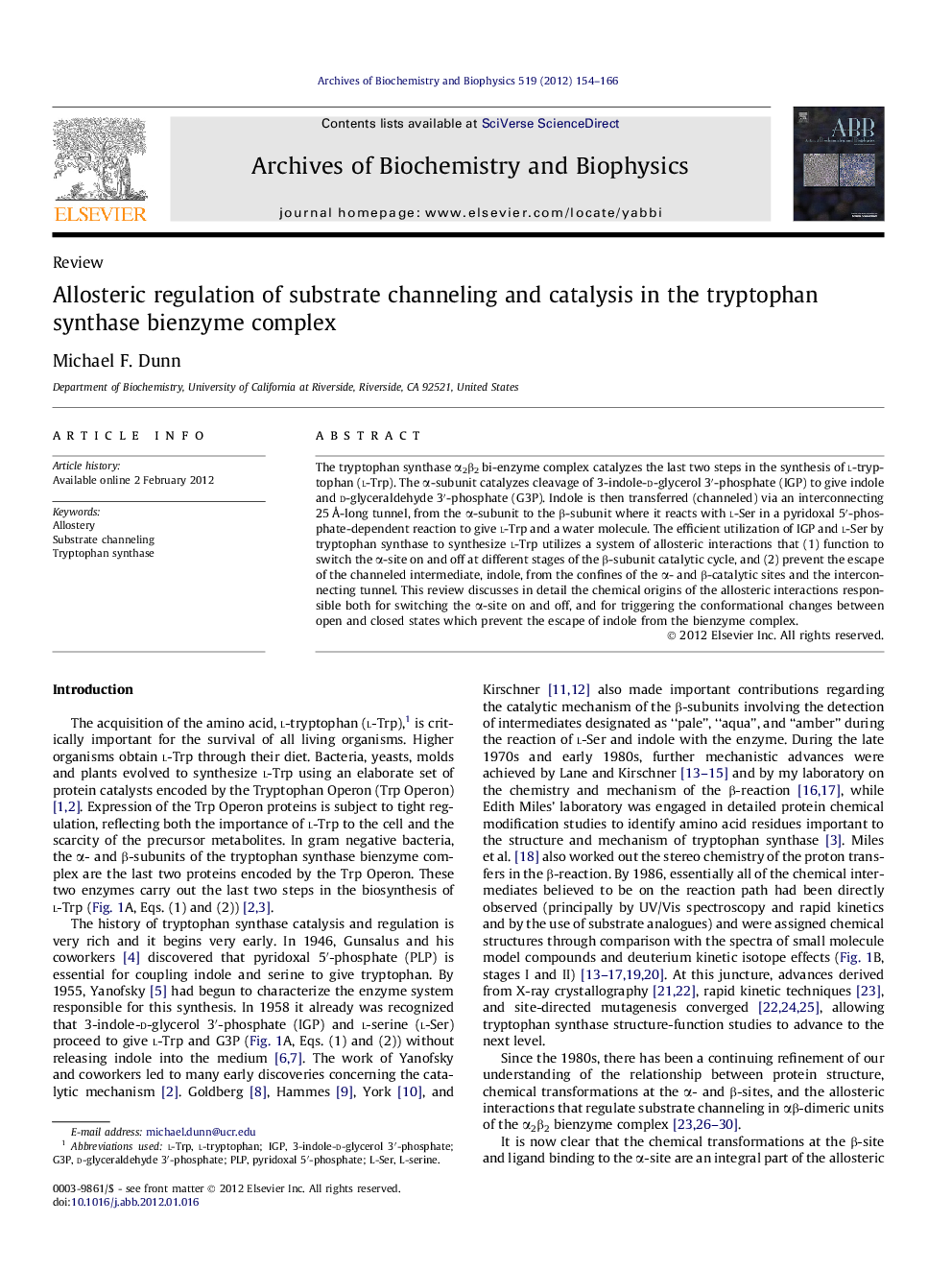| Article ID | Journal | Published Year | Pages | File Type |
|---|---|---|---|---|
| 1925607 | Archives of Biochemistry and Biophysics | 2012 | 13 Pages |
The tryptophan synthase α2β2 bi-enzyme complex catalyzes the last two steps in the synthesis of l-tryptophan (l-Trp). The α-subunit catalyzes cleavage of 3-indole-d-glycerol 3′-phosphate (IGP) to give indole and d-glyceraldehyde 3′-phosphate (G3P). Indole is then transferred (channeled) via an interconnecting 25 Å-long tunnel, from the α-subunit to the β-subunit where it reacts with l-Ser in a pyridoxal 5′-phosphate-dependent reaction to give l-Trp and a water molecule. The efficient utilization of IGP and l-Ser by tryptophan synthase to synthesize l-Trp utilizes a system of allosteric interactions that (1) function to switch the α-site on and off at different stages of the β-subunit catalytic cycle, and (2) prevent the escape of the channeled intermediate, indole, from the confines of the α- and β-catalytic sites and the interconnecting tunnel. This review discusses in detail the chemical origins of the allosteric interactions responsible both for switching the α-site on and off, and for triggering the conformational changes between open and closed states which prevent the escape of indole from the bienzyme complex.
Graphical abstractFigure optionsDownload full-size imageDownload high-quality image (141 K)Download as PowerPoint slideHighlights► Allosteric interactions control substrate channeling in tryptophan synthase. ► Allosteric interactions are mediated by substrate binding and covalent reaction. ► Binding of a monovalent cation cofactor also exerts allosteric interactions. ► The allosteric transition switches the enzyme between open and closed states. ► Efficiency is achieved by the synchronization of the α- and β-catalytic cycles.
